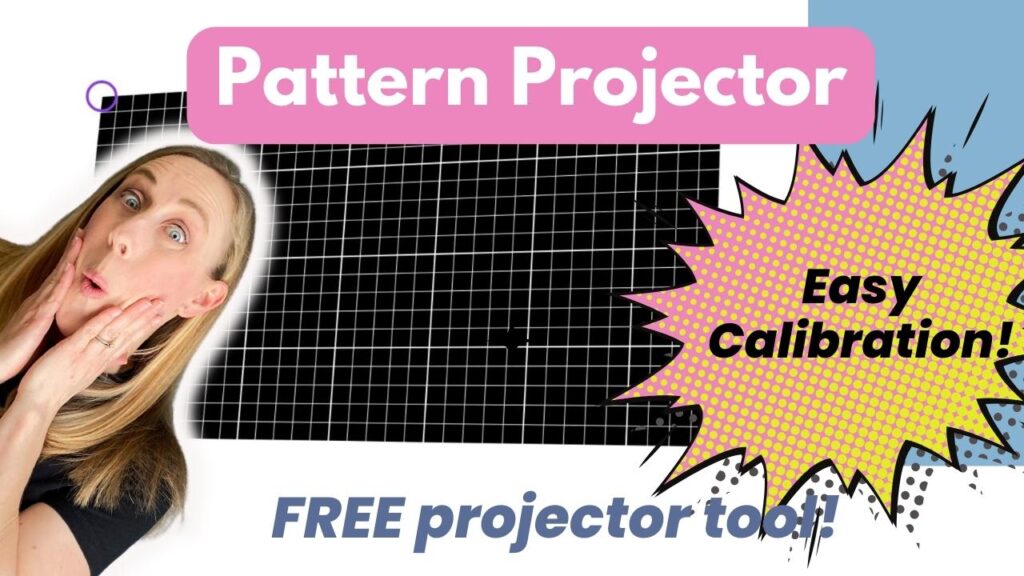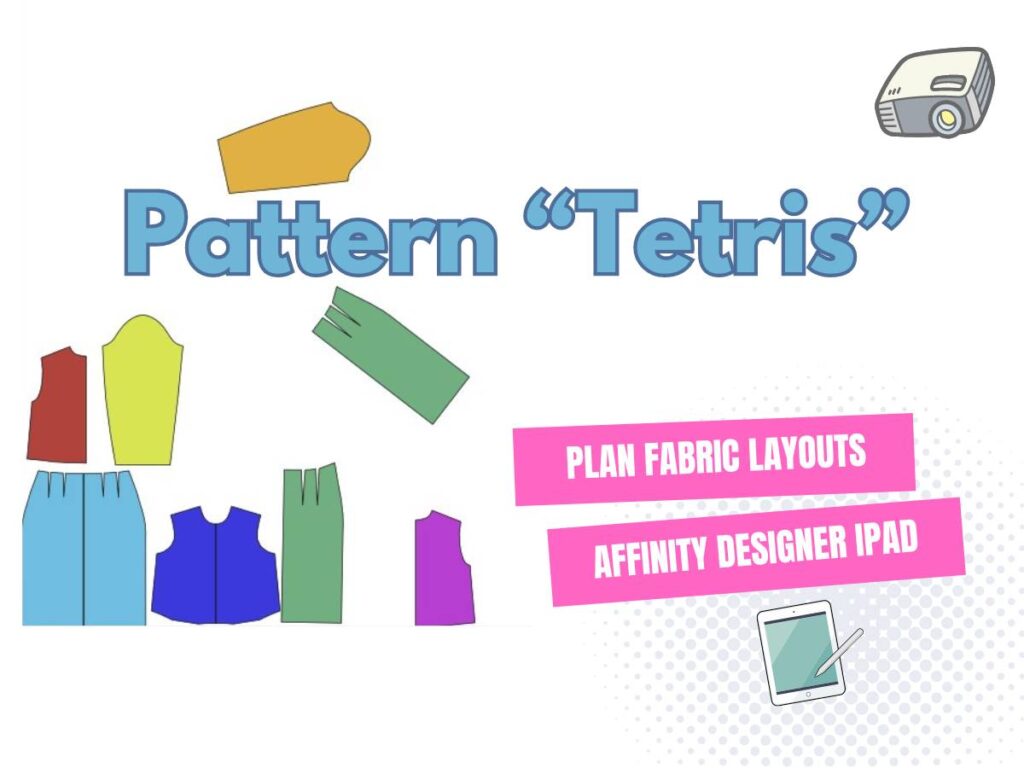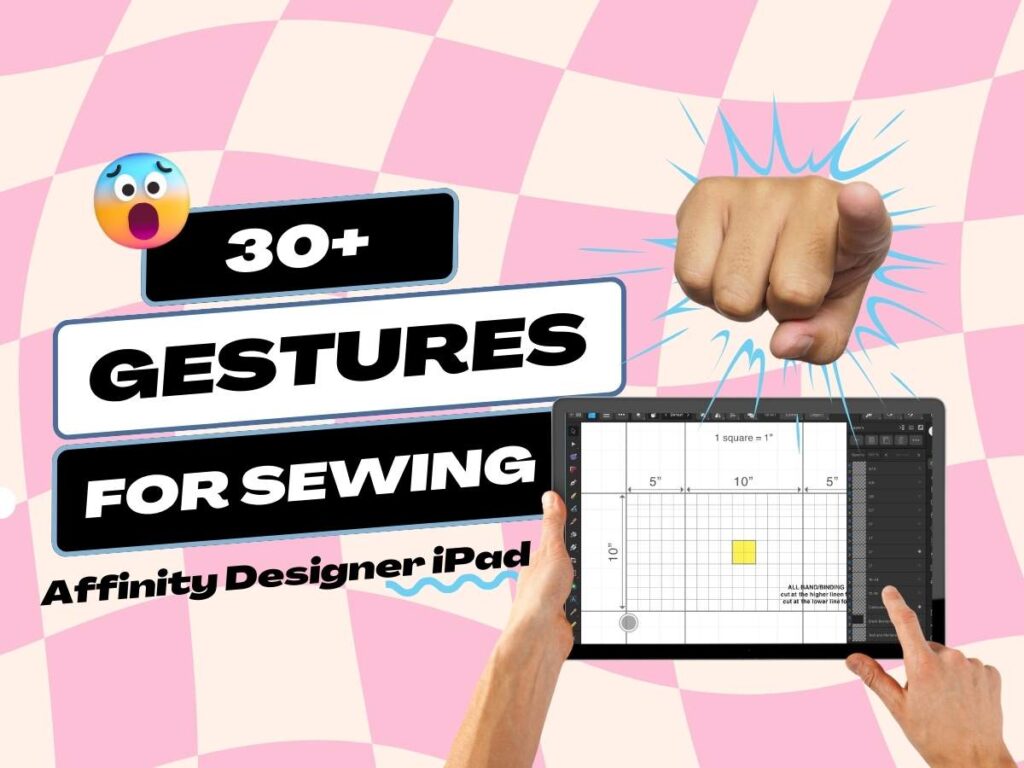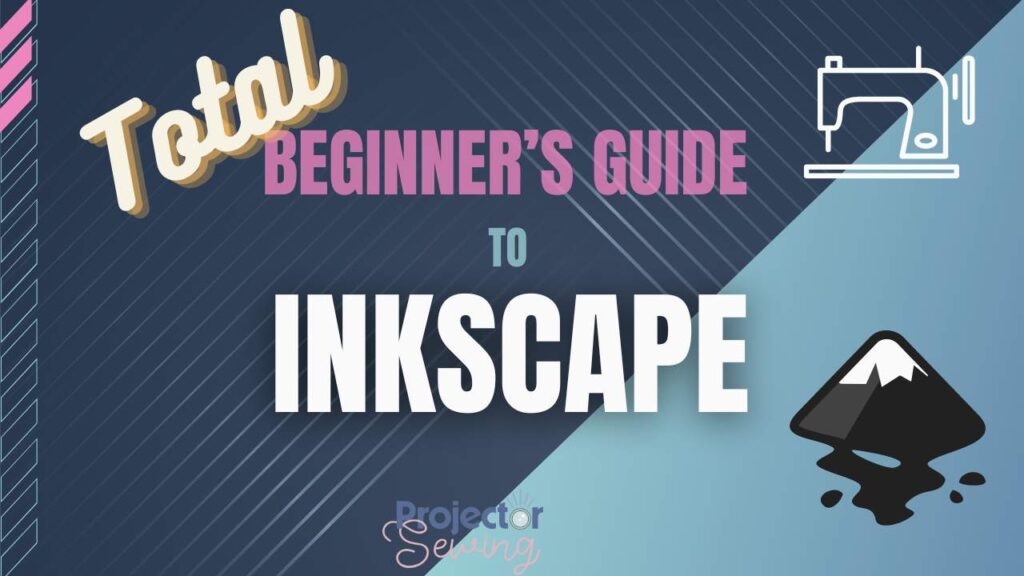*This post may contain affiliate links and we may earn a small commission if you click on them.
Do you want to be able to unfold pattern pieces on an A0 or projector file? Unfolding pattern pieces for projector sewing is easier than ever with the Affinity Designer.
When pattern companies were first converting pattern files for projector-friendly files, many left pattern pieces as “cut on the fold”. Some prefer to cut on the fold, while others prefer everything to be unfolded or “cut on the flat”.
Pattern designers are starting to “unfold” pattern pieces with a “fold line” left for those wishing to still cut on the fold.
However, if you want to use a pattern that only has cut on the fold, you can still “unfold” the pattern pieces pretty easily! Once you get the hang of it, you will be unfolding pieces in just a few clicks of a button!
Today I will show you how to use Affinity Designer to unfold pattern pieces.
You can project your pattern directly from Affinity Designer or save as a PDF to open in a PDF reader.
Prerequisite: Download Affinity Designer and Open Patterns
If this is your first time here, welcome! If Affinity Designer for sewing is new to you, I suggest getting started with some of my previous tutorials before jumping in here.
Affinity Designer is available on computers and iPad.
Get Started Using Affinity Designer
Video on How to Unfold and Mirror Pattern Pieces in Affinity Designer
Step 1: Open the pattern
Open a single-page PDF pattern in Affinity Designer desktop or iPad. If you get a popup asking for a password, you will need to remove the encryption before moving on.
This tutorial will walk you through how to unlock a pattern for Affinity Designer.
Step 2: (Optional) Copy Size and Create New Canvas
I like to work with a fresh new canvas and only the size I need. Sometimes you will need to also select the “Text” layer (shift and click or tap).
Go to the layers panel and select the size you will be using. Right-click (or 3-finger swipe down to access quick menu) and choose copy.
Create a new document by going to File>new (home screen> new on iPad).
Access the quick-menu again and paste.
Step 4: Group and Ungroup
Now on to grouping and ungrouping! Every pattern is grouped differently, so you will need to do a little trial and error. Click your mouse on the pattern piece that needs to be unfolded. Does it select all the words, multiple pattern pieces, or more than just the line that needs to be unfolded?
To have the text grouped with the pattern piece or to group any lines or marks in the pattern together, you will need to group them together. Click on the line and/or text that you want included in the pattern piece. While holding shift, click on the parts you want to group together. Then, press CTRL+G (or go layer>Group).
The quick menu on the iPad has the group and ungroup options.
Alternatively, you can click and drag your mouse to make a box around any objects that you want to group together. After you make the selection with your mouse, press CTRL+G to group the selection.
To ungroup pieces, use your mouse to draw a box around the entire pattern piece. Then, ungroup by pressing Shift+Ctrl+G on your keyboard or going to the quick menu >ungroup.
Step 5: Duplicate, Flip, Mirror
This is where the magic happens! Select the pattern piece that you want to be unfolded. You should be selecting just the pattern lines, not any of the instructions on the piece. If it is, try ungrouping again.
To duplicate, go to Edit>duplicate, right click>duplicate, or use the shortcut CTRL+J. (Quick menu on the iPad).
It may appear that nothing happened, but if you click on the pattern piece and move it there should be two identical pattern pieces.
Use Edit>Undo or Ctrl + Z at any time to undo an action. Double tap two fingers to undo on the iPad.
Now you have a duplicated piece, and you can now flip or mirror the pattern piece. In the context menu at the top, you should see some triangle icons. These are for flipping pattern pieces.
Click on the horizontal or vertical flip. The pattern piece flips. Move the pattern piece so the fold line lines up with the original pattern piece for patterns that you want “unfolded” with the fold line in the middle.
The fold lines should be on top of each other. If you have snapping turned on, snap lines will appear green when the shape is lined up.
Repeat this step until all the pieces are unfolded as you want.
Step 6: Save PDF to Project Directly from Affinity Desinger
The final step is to save the new pattern file with all the modifications you have made. Always double check that everything is how you want it.
You can now save your pattern as a PDF to open in a PDF reader for projecting or project the pattern directly in Affinity Designer. Make sure you are calibrated in Affinity Designer before cutting out fabric!
On the desktop version use “export” to save to PDF.
On the iPad, you can either project the pattern or export as a PDF. With the pattern open, go to the top 3-line “hamburger” menu and choose export. Choose PDF and export.







